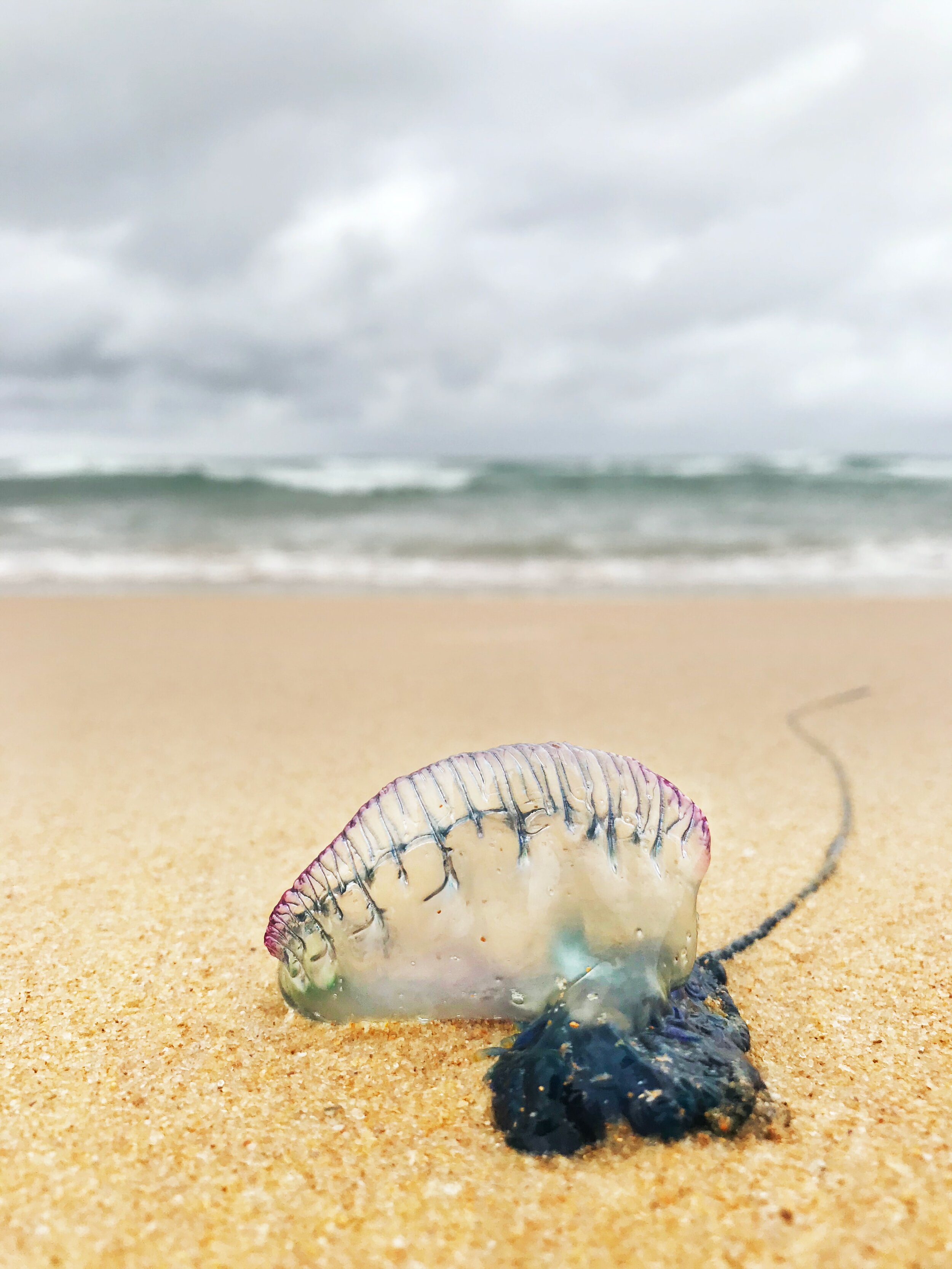By-The-Wind Sailor Jellyfish Found Stranded In Millions
2 minute listen
Cruising through the sea the, by-the-wind sailor jellyfish takes advantage of the wind with its billowy sail, but is the sail always to the jellyfish’s advantage? Every year, the by-the-wind sailor jellyfish washes up on beaches because of the wind. Ezra has seen this. When he traveled to Portugal two years ago, beaches, there were covered with misplaced jellyfish.
Eventually, the jellyfish die out of the water. This process happens every year when the wind changes course, but lately, millions of jellyfish are watched up, like in 2006. These high numbers of stranded jellyfish are uncommon. So why is this happening? Julia Parrish is a University of Washington professor. Along with her colleagues, Parrish analyzed 20 years of by the wind sailor jellyfish observations. Their data targeted the West coast of the United States.
Photo by Rosie Steggles on Unsplash
Their work was helped along by the COASST or the Coastal Observation And Seabird Survey Team. Data from the COASST showed 500 reports of more jellyfish on almost 300 beaches. A peak in these sightings, from 2015 to 2019, was also found. To understand the dying of the jellyfish, Parrish turned to a phenomenon called “the blob”.
The blob is another name for the warming of the Pacific Ocean. The blob has killed animals like sea lions, whales, and seabirds. But, if the Pacific continues to warm, there is an upside for the by-the-wind sailor jellyfish. Warmer temperatures mean a longer spawning season for fish like anchovies, which these jellyfish eat.
That means more food for the jellyfish. And, as a result, more jellyfish. Parrish thinks that this increase in the by-the-wind sailor jellyfish population accounts for the immense volume of stranded jellyfish. “A changing climate creates new winners and losers in every ecosystem,” Parrish said in the statement “What's scary is that we're actually documenting that change.”
